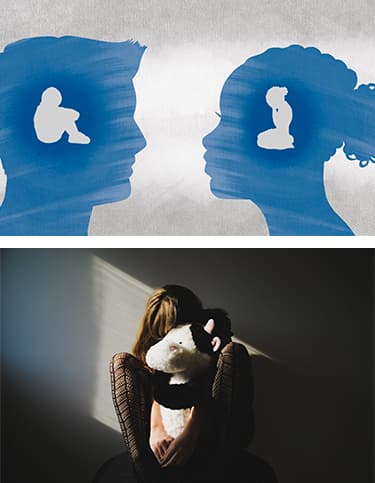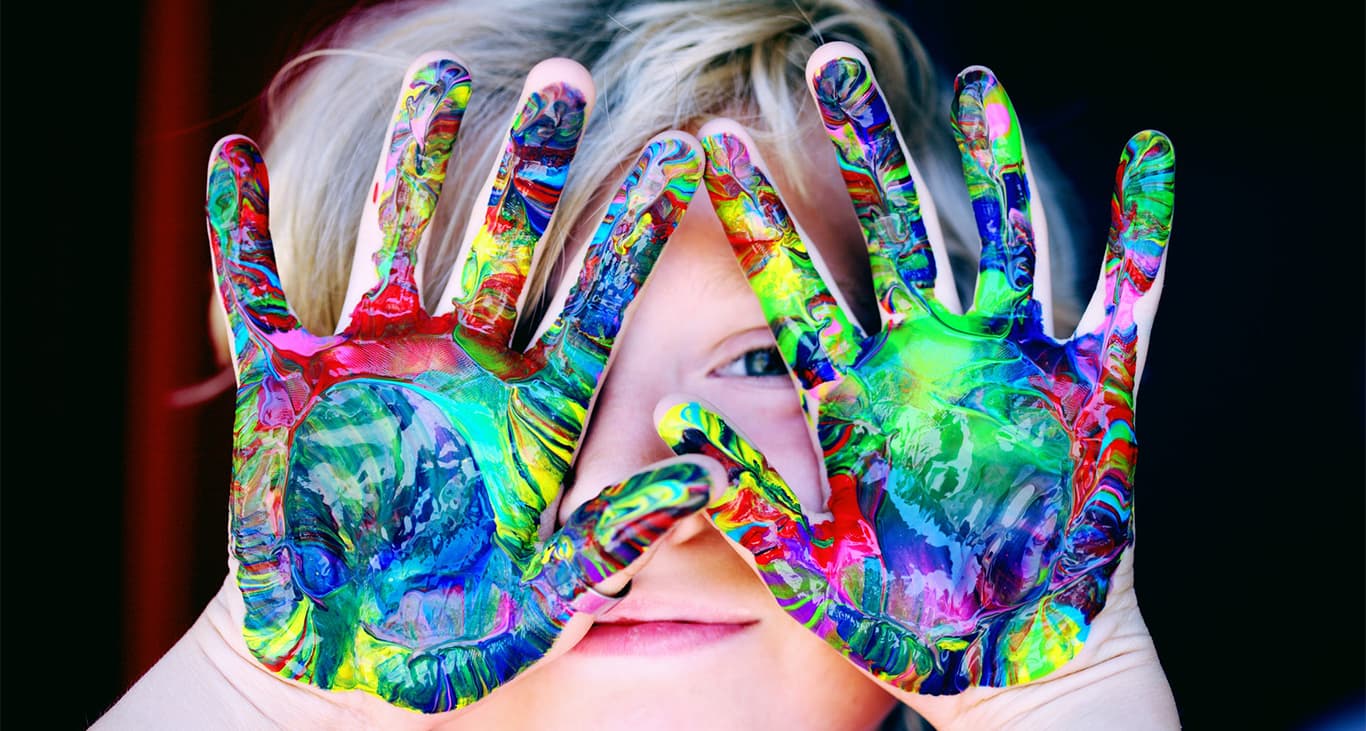The Journey of Healing the Inner Child
Reading Time: 5 minutesBy Kristin Wilson, MA, LPC, Vice President of Clinical Outreach
Within each of us, whether we are aware of it or not, is an inner child—with all the emotions and vulnerabilities of our younger selves. This inner child represents our capacity for innocence, wonder, awe, joy, sensitivity, and playfulness, and it also holds our accumulated childhood hurts, traumas, fear, and anger.
As children, we learn to negotiate the world around us and to form connections with others—beginning with our parents or primary caregivers. What we experience during these formative years stays with us forever, shaping the ways in which we navigate life and relationships.
How Trauma Shapes the Inner Child—and the Young Adult
We all carry something from our childhood into our adult world—a mix of positive and negative imprints and memories. For many of the young adults who come to Newport Institute, childhood trauma is at the root of the symptoms that brought them to treatment. Manifesting as anxiety, depression, substance abuse, or another mental health or co-occurring disorder, this trauma may have been physical, sexual, or verbal; chronic, complex, or acute. Often, it was relational trauma—a disruption in the early years to the bond between parent and child or with a trusted person who should have been a safe space, leaving long-lasting psychological wounds. Children who have been neglected or rejected learn to numb and disconnect from their emotions in order to survive what otherwise feels like unbearable pain. They repress feelings of anger or grief, and the inner child is left holding those difficult emotions.
“As an individual who has experienced childhood trauma matures into an adolescent and young adult, they learn to navigate their inner and outer environment using a variety of coping mechanisms—more or less successfully. But the inner child continues to hold onto those painful experiences.”
A child doesn’t have to experience significant trauma to be left with the sense that they are not good enough. Many of us learn as children that in order to be loveable, we must be “good”; when we are obedient and cheerful and get good grades, we receive love and praise from our parents. In adult life, that often translates into the belief that we are worthy only when we are positive, productive, and helpful to others. Our concept of our own worth is based on an expectation that has been set by someone else—the most important people in our young lives.
As an individual who has experienced childhood trauma matures into an adolescent and young adult, they learn to navigate their inner and outer environment using a variety of coping mechanisms—more or less successfully. But the inner child continues to hold onto those painful experiences. This held trauma impacts every aspect of how young adults relate to the world—in professional and academic environments, romantic relationships, friend groups. For example, adults whose parents didn’t create healthy boundaries with them in childhood typically struggle with setting those boundaries in adult relationships. They might find it difficult or impossible to create truly authentic connections, because of a fear of abandonment, and because they haven’t fully integrated all the parts of themselves.


Steps Toward Healing the Inner Child
The work of healing one’s inner child is an evolution and a gradual unfolding that occurs over time, with dedication and, ideally, with the guidance of a therapist trained in trauma-focused approaches. Here’s how the journey unfolds.
- First, we become conscious of our inner child, recognizing and acknowledging his/her/their existence. Remaining unconscious is what empowers the dissociated inner child to take possession of the personality and to overpower the will of the adult. This process involves digging into childhood experiences and family dynamics, including messages you might have internalized as a child about how you needed to be in order to receive love.
- As the healing process continues, we learn to value and respect our inner child, offering compassion and empathy for what they experienced. We establish an ongoing dialogue, consciously communicating as we confront old pain and unfulfilled needs.
- Eventually, the adult part of the personality learns to relate to the inner child just as a good parent relates to a flesh-and-blood child—providing healthy discipline, limits, boundaries, and structure. This conscious and balanced relationship allows the inner child—and the mature or maturing adult—to access joy and playfulness once again. It also empowers the adult to end toxic relationships, as they build self-esteem and come to know that they deserve unconditional love.
As we continue to offer our inner child support, nurturance, and acceptance, maintaining an ongoing dialogue, a reconciliation between inner child and mature adult can be reached. In the words of Stephen Diamond, PhD, author of Psychotherapy for the Soul, “We create a new, mutually beneficial, cooperative, symbiotic relationship in which the sometimes conflicting needs of both the adult self and inner child can be creatively satisfied.”
Therapeutic Modalities Used in Inner Child Work
Because childhood experiences are central to all therapeutic processes, inner child work is incorporated into many different modalities, both clinical and experiential. For young adults, creative arts modalities can be particularly effective in accessing the inner child. It might be as simple yet powerful as writing a note to their inner child—going back in time to tell their younger self that what happened wasn’t their fault, that they no longer need to carry blame or guilt, that they are loved and deserve love. Or they might journal or paint while tuning into their younger self.
Know the Facts
Because childhood experiences are central to all therapeutic processes, inner child work is incorporated into many different modalities, both clinical and experiential.
In Clinical Behavioral Therapy (CBT) and Dialectical Behavioral Therapy (DBT), young adults come to understand how their patterns of thinking and behavior are shaped by their childhood experiences. They recognize, for example, how they are using external achievements to confirm their worthiness, or why they find it difficult to trust others and express true feelings in intimate relationships.
While inner child work is usually done in individual therapy sessions, for young adults it can be helpful to bring parents and other family members into the process. Family therapy, particularly the Attachment-Based Family Therapy model we use at Newport Institute, is designed to address the original disruptions that left the inner child with unfulfilled needs. Thus, it can help to create resolution and healing of both past wounds and current relationships.
Self-Care for the Inner Child
To overcome childhood trauma and effectively work with the repressed memories and the painful emotions that emerge when we are no longer numb, we need to offer ourselves understanding, compassion, and love. This is work that teenagers, young adults, and older adults can do, first in therapy and then as a practice in daily life. Engaging in this type of intentional self-care and self-compassion is motivated by self-discovery, and is essential in supporting inner child work. It begins with knowing that you are worthy enough to receive it.
Becoming empathetic to that little voice inside your head that’s feeling insecure or fearful, and learning to be aware of and express those feelings on behalf of the inner child, is powerful work. You practice giving yourself the same patience and understanding that you would give to a close friend or relative—embodying for yourself that loving, active listener that you strive to be for others.
As the inner child feels increasingly heard and loved, and becomes more integrated in the adult person, the joyful qualities of childhood begin to re-emerge. We are more easily able to access playfulness, awe, and curiosity; to find magic and beauty in the world around us; and to feel warmth and empathy in our relationships. To nurture these qualities, we can consciously create space for them, setting aside time for creativity, play, or time in nature, on our own or with loved ones. Rather than seeing the world as a source of potential threats to our safety and sense of self, we begin to experience it as full of wonder, magic, and possibilities.

